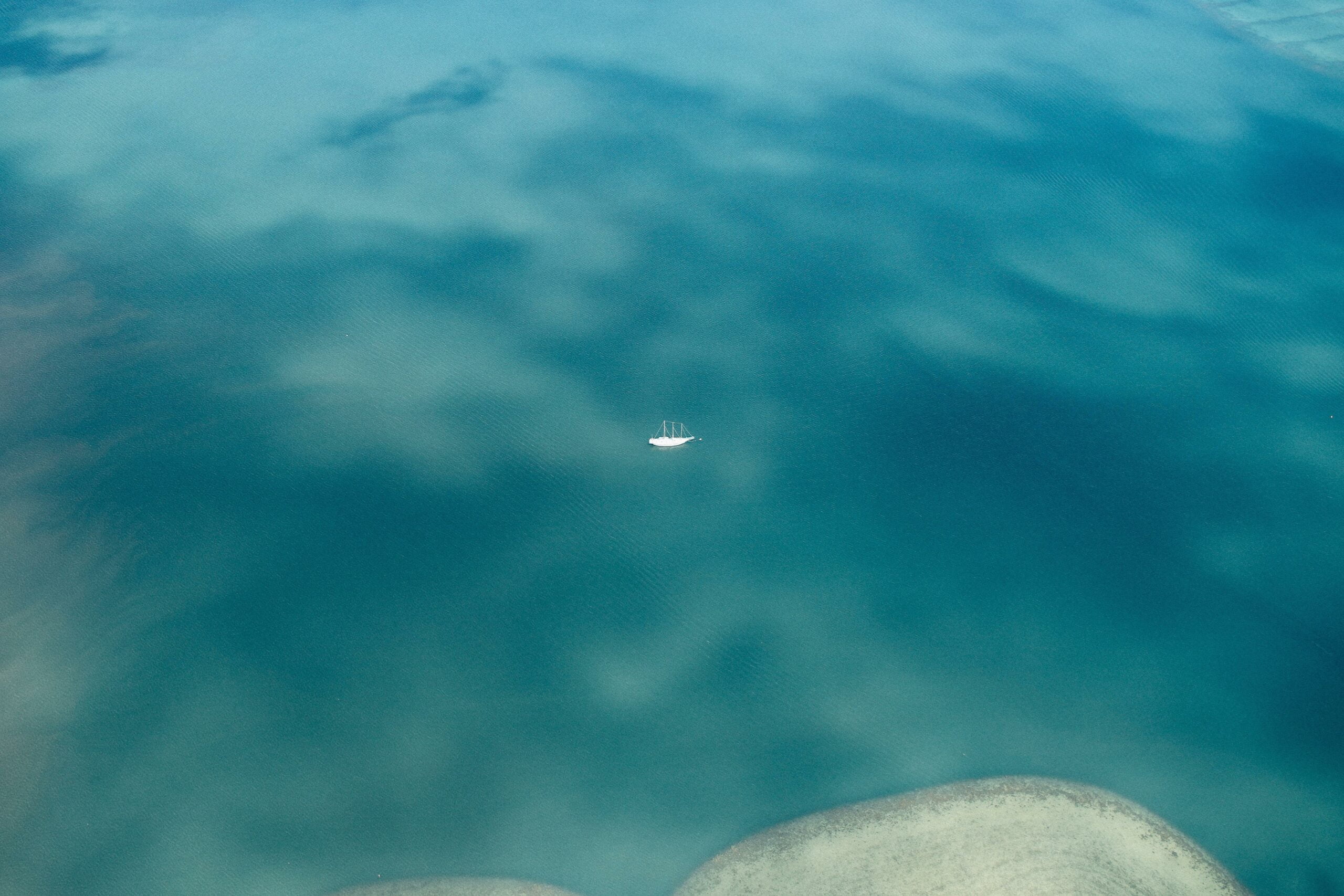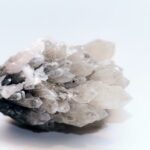Welcome to the intriguing world of turquoise, where mysteries and treasures await. In this article, we will delve into the depths of the Earth and uncover the hidden secrets of turquoise – one of nature’s most captivating gemstones. Prepare to embark on a journey through the geological wonders of this precious stone as we explore its elusive origins and reveal the enigmatic locations where turquoise can be found. So fasten your seatbelts and get ready to discover the mesmerizing world of turquoise and the quest to unveil its hidden treasures.

Where Is Turquoise Found?
Turquoise, a captivating gemstone admired for its unique blue-to-green color, is found in various locations around the world. But what truly determines the presence of turquoise? Let’s explore the geography and geological factors that contribute to the formation and discovery of this precious mineral.
The Ideal Turquoise Habitat
Turquoise thrives in dry and barren regions, typically in arid climates. This is because turquoise forms when acidic, copper-rich groundwater seeps downward and reacts with minerals containing phosphorus and aluminum. This fascinating process occurs most favorably in areas with elevations ranging from 3,000 to 8,500 feet.
“Lurking within these dry and arid landscapes, turquoise waits to be discovered, hidden from plain sight.”
Global Turquoise Hotspots
When it comes to turquoise, several countries have emerged as leading sources of this captivating gemstone. The southwestern United States, known for its iconic turquoise mines such as Bisbee, Lander Blue, Number Eight, and Lone Mountain, remains a prominent producer. China, Chile, Egypt, Iran, and Mexico also boast significant turquoise deposits.
“These turquoise hotspots hold the key to unlocking Earth’s hidden turquoise treasures.”
Exploring Turquoise Sources
Where exactly can we find turquoise? The answer lies in an assortment of locations. Turquoise can be discovered in mines, mine dumps, as well as within sedimentary or volcanic rocks. Its formation is a result of intricate chemical reactions that take place over time.
“Journeying through turquoise’s birthplaces, we encounter mines, mine dumps, and sculpted rock formations, each holding a piece of turquoise’s story.”
Unveiling the Southwest
One cannot speak of turquoise without mentioning the rich turquoise mines of the southwestern United States. It is here that turquoise mining has thrived for centuries, leaving a lasting legacy. Bisbee, Lander Blue, Number Eight, and Lone Mountain are some of the most famous turquoise mines in this region.
“The southwestern United States, a turquoise paradise, whispers tales of ancient mining traditions and the vibrant hues of turquoise buried deep within its mines.”
Going Beyond Mines
While mines and mine dumps are easy places to find turquoise, they are by no means the only locations. Turquoise can manifest itself in unexpected places, waiting to be unearthed by the curious and intrepid. The diversity of turquoise’s potential homes adds to the thrill of exploration.
“Beyond the conventional, turquoise beckons us to expand our search, encouraging exploration beyond the confines of mines and mine dumps.”
The Quest for Persian Blue
When evaluating turquoise quality, the rich robin egg blue or sky blue color of Persian turquoise mined in Iran acts as a benchmark. Its breathtaking hue and historical significance make Persian turquoise highly sought after by gem enthusiasts.
“Like a finely woven tapestry, Persian turquoise captivates our gaze with its exquisite blue, reminding us of the wonders hidden within Earth’s deepest recesses.”
From the Ottoman Empire to the World
The word “turquoise” itself carries the echoes of a historical journey. Originating from the Old French word “turquois,” meaning “Turkish,” turquoise first made its way to Europe through the Ottoman Empire. This captivating gemstone transcends borders and captivates hearts, leaving a lasting impression wherever it goes.
“Turquoise’s unique allure bridged continents, connecting cultures and spreading wonder as it ventured from the Ottoman Empire to adorn the world.”
In conclusion, turquoise’s geographical origins lie in dry and arid regions, where it forms through complex chemical reactions. The southwestern United States, China, Chile, Egypt, Iran, and Mexico serve as prominent sources of this magnificent gemstone. Turquoise can be found in mines, mine dumps, and sedimentary or volcanic rocks, with the beauty of Persian turquoise serving as a benchmark for quality. As we embark on a quest to uncover the hidden treasures of turquoise, let us embrace the allure of its origins and the vibrant stories it holds within.
Turquoise is not just a beautiful gemstone; it also holds a fascinating history. Did you know that turquoise was one of the first gems to be mined and used in jewelry? Its vibrant blue color has captivated cultures throughout the ages. If you’re interested in learning more about this mesmerizing gemstone, check out these interesting facts about turquoise. Trust me, you won’t want to miss it! Just click here to dive into the world of turquoise.
Where Is Turquoise Found
Turquoise, a stunning gemstone known for its vibrant blue-green color, has captivated people for centuries. But have you ever wondered where this exquisite stone comes from? Let’s embark on a journey to explore the world’s most exceptional turquoise mines and uncover the natural origins of this precious gemstone.
One of the most significant factors that contribute to the allure of turquoise is its origin. The turquoise mines in the world are like hidden treasures, carefully tucked away in various corners of the globe. From the arid plains of the United States to the majestic mountains of Iran, these mines hold the key to some of the most beautiful turquoise found on Earth. Click here to discover more about the fascinating turquoise mines in the world: turquoise mines in the world.
Beyond the mines themselves, understanding the natural turquoise origins is crucial in appreciating the true beauty and authenticity of the stone. The distinct tint and striking patterns of turquoise are influenced by its specific location of formation and the geological processes it undergoes. Delve deeper into the origins of natural turquoise and learn more about the mesmerizing stories they tell. Follow this link to explore the intriguing world of natural turquoise origins: natural turquoise origins.
As we continue our exploration, let’s uncover the various locations of turquoise deposits around the world. These deposits hold a wealth of turquoise waiting to be discovered by passionate collectors and enthusiasts alike. From the vast expanses of Arizona, USA to the rugged terrains of China, each location offers unique turquoise characteristics that make them sought after by connoisseurs. Unearth the locations of turquoise deposits and embark on an adventure to source these precious gems. Click here to begin your journey: locations of turquoise deposits.
The world of turquoise is one filled with wonder, history, and sheer beauty. By understanding the turquoise mines, natural origins, and locations of deposits, you will gain a deeper appreciation for this extraordinary gemstone. So join us on this enthralling expedition, click on each link provided, and let your love for turquoise come alive.
Turquoise Mining in Nevada and Mine Claim Chat
[youtube v=”hgA0IJtXvWk”]
Introduction
Nevada, with its charming old mining towns and breathtaking landscapes, is a treasure trove for rock hounds and turquoise enthusiasts. In central Nevada, amidst the snow-capped mountains and alluvial fans, lies a turquoise paradise. This article explores the fascinating world of turquoise mining in Nevada and delves into the topic of mine claims.
Turquoise Mining in Central Nevada
Central Nevada boasts a wealth of turquoise mines, with the area being dotted with abandoned mining towns. In one such town, our intrepid explorer, Ellie, uncovers two turquoise mines. The dilapidated buildings and scattered rocks set the scene for an exciting adventure.
While turquoise can be found all over the mountains in central Nevada, the challenge lies in identifying these precious gemstones amidst their camouflaged host rock. Ellie’s discerning eyes spot fragments of turquoise left behind by previous rock hounds. Through her journey, we learn that central Nevada’s turquoise is not of gem quality and requires stabilization due to its soft and crumbly nature.
“Central Nevada is one of those areas that has turquoise everywhere, all over the mountains.”
Types of Mining Claims
To truly comprehend turquoise mining in Nevada, it is essential to understand the different types of mining claims. There are two distinct categories: purchasing property with mineral rights and claiming a portion of public land for mineral extraction.
The first type involves buying private property and claiming the associated mineral rights. The second type, more common in Nevada, requires filing a claim with the state for a specific section of public land. Claimants have to renew and pay for the claim yearly, as well as fulfill certain work obligations to maintain its validity.
“I would like to clear up a few misconceptions about mining claims. There are two different types of mining claims…”
The Myth of Claim Ownership
A prevalent misconception among claim owners is that by holding a mining claim, they also own the land. However, this is not the case. Public land remains public, and while people are discouraged from rock hounding in these areas, they are still permitted to hike and explore. Entering private claims is a different matter, but the general public is entitled to enjoy the natural beauty of public land.
“You have the right to walk around, you have the right to view it, you even have the right to pick up a rock. It may be private claims, but it is not private land.”
The Geological Marvel of Nevada
The geology of central Nevada contributes to the abundance of turquoise and other minerals. The area features welded and non-welded silica ash flow tuffs, rhyolitic flows, and shallow intrusive rocks. Additionally, ore bodies are often found within faults, with turquoise concealed within breccias and gouge zones.
“The geology in this area consists of welded and non-welded silica ash flow tufts, rhyolitic flows, and shallow intrusive rocks as well as andesite…”
Uncovering Turquoise Veins
Exploring an old mine in central Nevada, Ellie’s excitement grows as she spots veins of turquoise within the walls. The turquoise, appearing almost invisible against the host rock, requires a keen eye to identify. This unique characteristic further adds to the allure of turquoise mining in Nevada.
“You might not have been able to see it at first, but as you get closer, you can see the turquoise. It’s very camouflaged in the host rock.”
The Fascination of Old Mining Structures
Beyond the turquoise itself, the structures left behind by old miners offer a glimpse into their laborious efforts. The rocky walls, wooden structures, and discarded artifacts scattered on the hillsides tell the story of how mineral resources shaped the region. The glass bottles and cans, once treasures to the miners, now serve as reminders of the past.
“I love the old rock structures and all the mining activity you see on the surrounding hills. It really tells a story about how minerals influenced this area.”
Conclusion
Turquoise mining in Nevada presents a captivating adventure for rock hounds and history enthusiasts alike. Central Nevada’s vast turquoise deposits and intriguing mining heritage make it a truly remarkable destination. By debunking misconceptions about mining claims, understanding the geology of the area, and appreciating the remnants of old mining structures, we gain a deeper appreciation for the allure of turquoise in the Silver State.
“Thank you all so much for being part of my adventure. I’ll see you all next time!”
FAQ
Question 1
Where is turquoise typically found?
Answer 1
Turquoise is typically found in dry and arid regions with elevations between 3,000 and 8,500 feet. Some of the main sources of turquoise include the southwestern United States, China, Chile, Egypt, Iran, and Mexico. It is commonly found in mines, mine dumps, or sedimentary and volcanic rocks.
Question 2
What is the best climate for turquoise formation?
Answer 2
Turquoise forms best in an arid climate, which explains the geography of turquoise sources. The mineral is known to form in dry and barren regions with acidic, copper-rich groundwater. These conditions promote the chemical reaction necessary for turquoise formation.
Question 3
Which turquoise mines are the most famous in the Southwest United States?
Answer 3
The Southwest United States is home to several famous turquoise mines, including Bisbee, Lander Blue, Number Eight, and Lone Mountain. These mines have produced high-quality turquoise and have become well-known among collectors and enthusiasts.
Question 4
What is the color of Persian turquoise?
Answer 4
Persian turquoise, which is mined in Iran, is known for its robin egg blue or sky blue color. This color is often considered a reference for evaluating the quality of turquoise. The term “turquoise” originated from the Old French word “turquois,” meaning “Turkish,” as the mineral was first introduced to Europe through the Ottoman Empire.
Question 5
Is turquoise found only in mines and mine dumps?
Answer 5
While turquoise can be easily found in mines or mine dumps, it can also be found in other potential locations. The mineral forms through a chemical reaction in sedimentary or volcanic rocks. Therefore, it is possible to find turquoise in various geological formations, not solely limited to traditional mining areas.
- Unlock Filipino Culture: A Deep Dive into Traditions and Practices - April 23, 2025
- Unlock Spanish Culture: Insights & Opportunities Now - April 23, 2025
- White Spirit Uses & Substitutes: A Deep Dive for Pros & DIYers - April 23, 2025
















